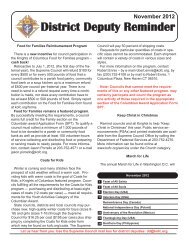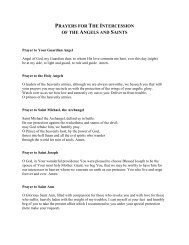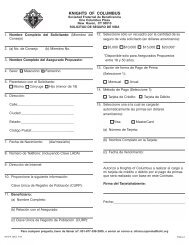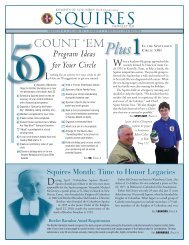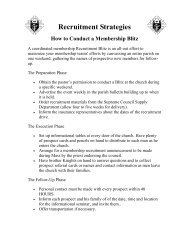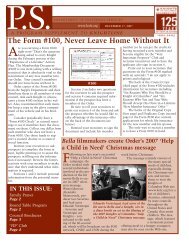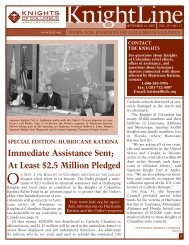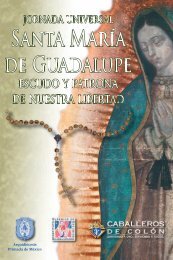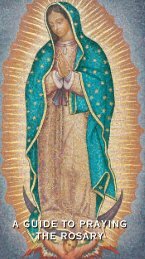Revelation: - Knights of Columbus, Supreme Council
Revelation: - Knights of Columbus, Supreme Council
Revelation: - Knights of Columbus, Supreme Council
You also want an ePaper? Increase the reach of your titles
YUMPU automatically turns print PDFs into web optimized ePapers that Google loves.
in judgment unexpectedly, like a thief in the night (v. 15) and he will destroy<br />
them utterly (v. 16). The symbolic place <strong>of</strong> this judgment <strong>of</strong> God, Armageddon,<br />
is the val ley <strong>of</strong> Megiddo, the battleground <strong>of</strong> Palestine. Here Ahaziah the king<br />
<strong>of</strong> Judah had been slain by Jehu (2 Kings 9:27). Here King Josiah was slain<br />
by Pharaoh Neco (2 Kings 23-29). This battleground was, in effect, already a<br />
symbol <strong>of</strong> death and punishment.<br />
The seventh bowl, at last, de scribes the end <strong>of</strong> all (vv. 17-21) in language<br />
that we have already seen (cf. 8:7), and in terms <strong>of</strong> Exodus 9:23-24. Still in<br />
this per spective <strong>of</strong> the bowls, in chapter 17 and following, these events are<br />
described in greater detail with much more imagery and imagination.<br />
The Harlot and the Beast<br />
(<strong>Revelation</strong> 17)<br />
First is the picture <strong>of</strong> the great harlot Babylon seated upon the beast (17:1-6).<br />
The harlot is the goddess <strong>of</strong> Rome. She is seated on waters, the symbol <strong>of</strong> evil<br />
(as is said in almost the same words in Jeremiah 51:13); her description in v. 2<br />
is the description <strong>of</strong> Tyre in Isaiah 23:15-17. The beast is described here as<br />
scarlet (the color <strong>of</strong> royalty and with the seven heads and ten horns as before,<br />
which are about to be explained); similarly the woman is given all these<br />
characteristics <strong>of</strong> the beast (cf. Jeremiah 51:7), as the persecutor <strong>of</strong> God’s elect.<br />
That she is said to be in a wilderness (v. 3) is probably better to show her<br />
contradiction to the woman <strong>of</strong> chapter 12, who personi fied the Church which<br />
was protected in the wilderness by God. The Church and the antichrist occupy<br />
the same terrain, this world, and the Church will be safeguarded against the<br />
attacks <strong>of</strong> evil.<br />
The rest <strong>of</strong> the chapter is de voted to an explanation <strong>of</strong> this vision, as is<br />
announced in v. 7. The beast was and is not (v. 8), in opposition to God who is<br />
and who was (1:4, etc.). Yet both the power <strong>of</strong> God and the power <strong>of</strong> the beast<br />
are to come – the opposition <strong>of</strong> these two powers is, in fact, the sum <strong>of</strong> the<br />
Apocalypse. The seven heads <strong>of</strong> the beast are seven hills on which the woman is<br />
seated (v. 9), a certain reference to Rome, the city <strong>of</strong> the seven hills. Here we<br />
see why John has characterized the power <strong>of</strong> evil as Babylon. Just as Babylon<br />
had represented to the Old Testament Jew all that was wicked and symbolized<br />
persecution (some times other cities were named, but Babylon was the<br />
favorite), so does Rome in John’s time.<br />
- 50 -




